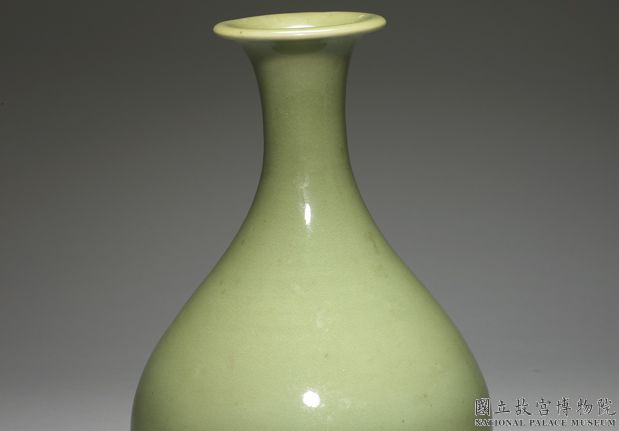Yuhuchun vase in celadon glaze. Longquan ware. Early Ming dynasty (1368-1435)
- Image Number: C1B001290N000000000PAC
- Dynasty: Ming dynasty
- Category: Ceramics
- Function: Container
- Material: Minerals/Ceramics/
- Description:
The bottle style with a skimmed mouth, a thin neck, a pear shaped large round belly and round feet is commonly known as “Jade Pot Spring”. It can be used as disc mouth or flat lip. This work has flat lips, wide and round abdomen, and round feet. The outer wall is glossy; The foot tip is unglazed and vermilion brown. The name of the jade pot spring was first seen in written records around the time of Kangxi in the Qing Dynasty. However, after the Song and Jin Dynasties, it became a popular bottle style, mostly used to hold wine, but also used to make soy sauce. In Longquan Kiln, such artifacts are very common. Among the funerary objects of the Wanli Dingling Mausoleum, a gold and jade pot with a sign of its name was pasted on the spring. It was named “gold pot bottle”. It was a utensil contained in the Ming Dynasty’s halogen books, guards of honor, and funerary objects. There were also books called “Hu bottles”, which can be said to be the most popular wine vessels in the Ming Dynasty. Gold, silver, copper, porcelain, and enamel were common. The shape and outline of this device are similar to those unearthed from Zhang Yun’s tomb in the 28th year of Hongwu’s reign (1395)

![图片[2]-Yuhuchun vase in celadon glaze. Longquan ware. Early Ming dynasty (1368-1435)-China Archive](https://chinaarchive.net/Ming dynasty/Ceramics/C1B001290N000000000PAC-44491.jpg)
![图片[3]-Yuhuchun vase in celadon glaze. Longquan ware. Early Ming dynasty (1368-1435)-China Archive](https://chinaarchive.net/Ming dynasty/Ceramics/C1B001290N000000000PAC-44492.jpg)
Pictures & Images [HD] download
© Copyright
The copyright of the article belongs to the author, please keep the original link for reprinting.
THE END





